It’s blue hour in El Segundo. We’re sitting at the traffic light at Grand Ave. and Vista Del Mar, facing the ocean. The sea is heaving blue-grey swells in rapid succession. White, foamy lips smile as the waves barrel across the breaks. As we wait for the light to turn green, a worker is preparing to open the parking lot gate at El Segundo Beach. To our right, the ever-present Chevron refinery spews steam into the chilled morning air.
Coming from the opposite direction — Hermosa Beach — is professional surfer Sara Kohrogi, one of the stars of last year’s Disney+ series “Chasing Waves.” We’re meeting at El Porto, the popular locals’ spot in Manhattan Beach. It’s her hometown break. On this day, she’s not alone in wanting to surf.
As we approach the right-hand turn on 45th St., which bends down toward the beach, it’s evident that every surfer in the South Bay is planning to catch the 5-foot swells. It’s been a quiet couple of weeks for Southern California’s surf spots. Catch what you can, when you can.
With traffic backed up at the light, we’re watching the waves. One after another, crashing ashore, driven by a strong on-shore breeze. We make contact with Sara, who says she’s just about there, and we plan to meet in the middle of the lot.
Minutes later, the parking gates open at El Porto and a slow-rolling stream of brake lights and tailpipe smoke crawls inside. Surfboards are strapped on roof racks, sticking out of partially open windows and visible in back seats. Drivers wearing sherpa fleece are holding coffee cups while rubbing sleep from their eyes. It’s gonna be jammed. That’s just how it works here.
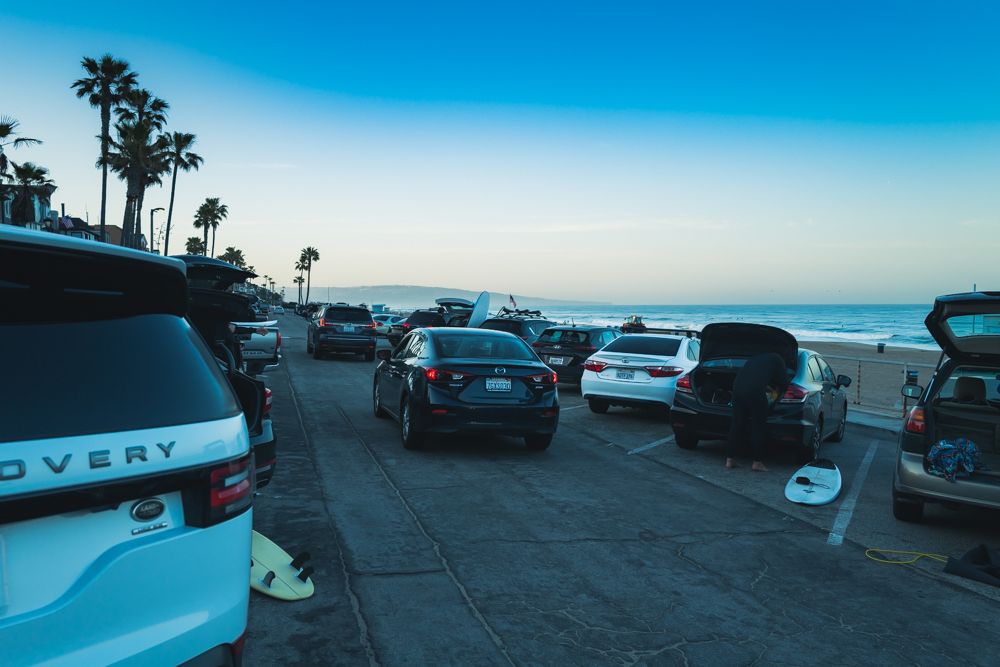
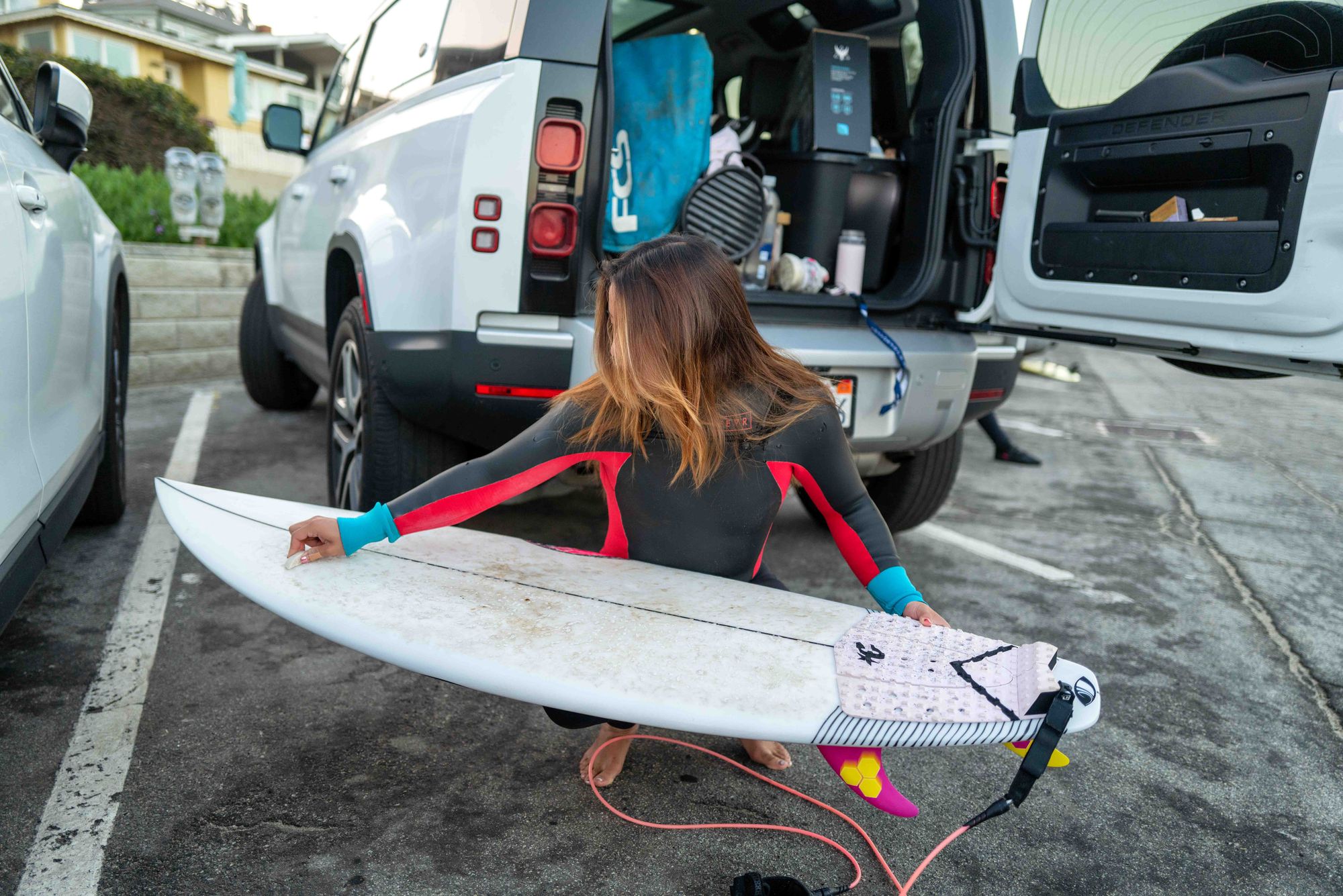
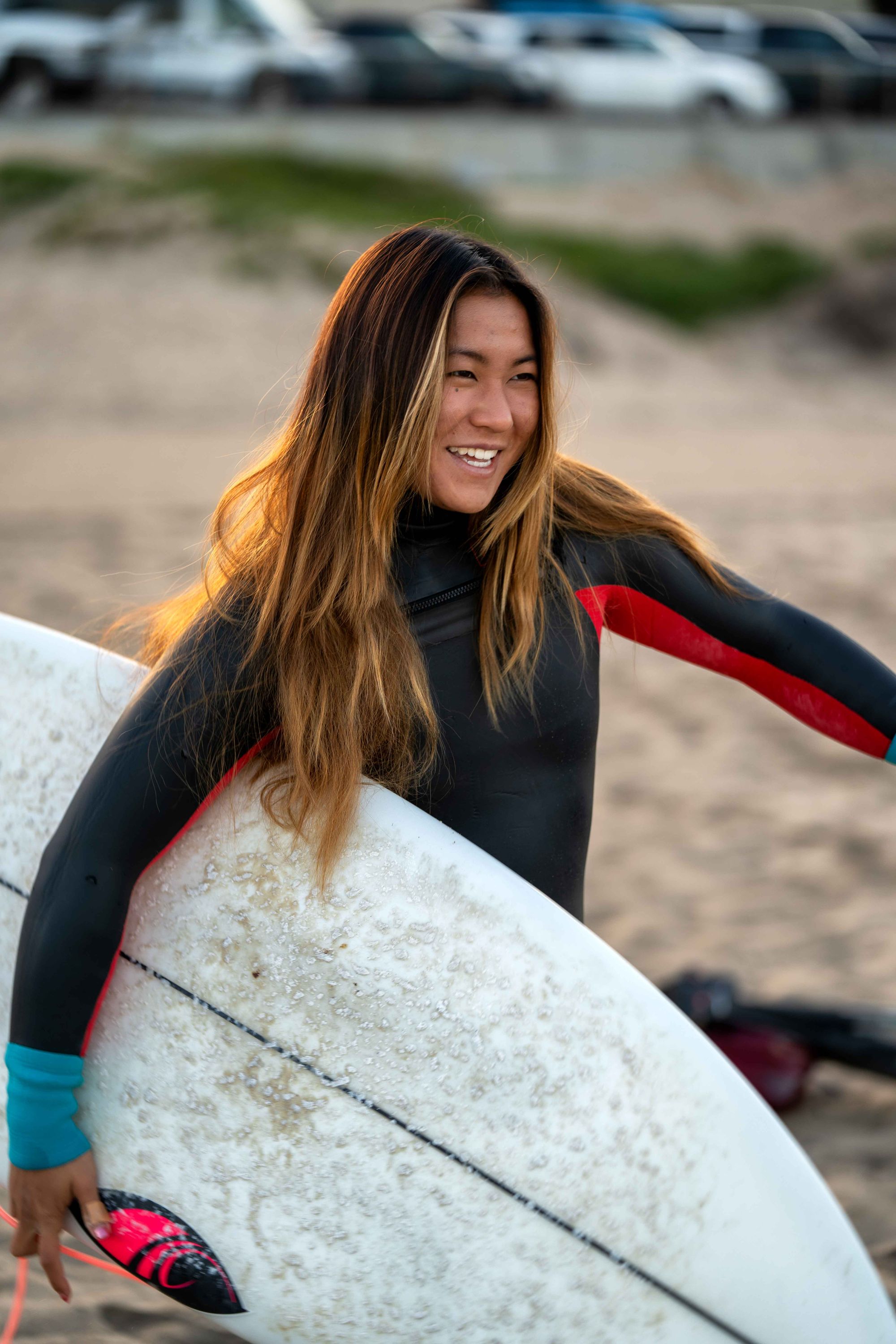
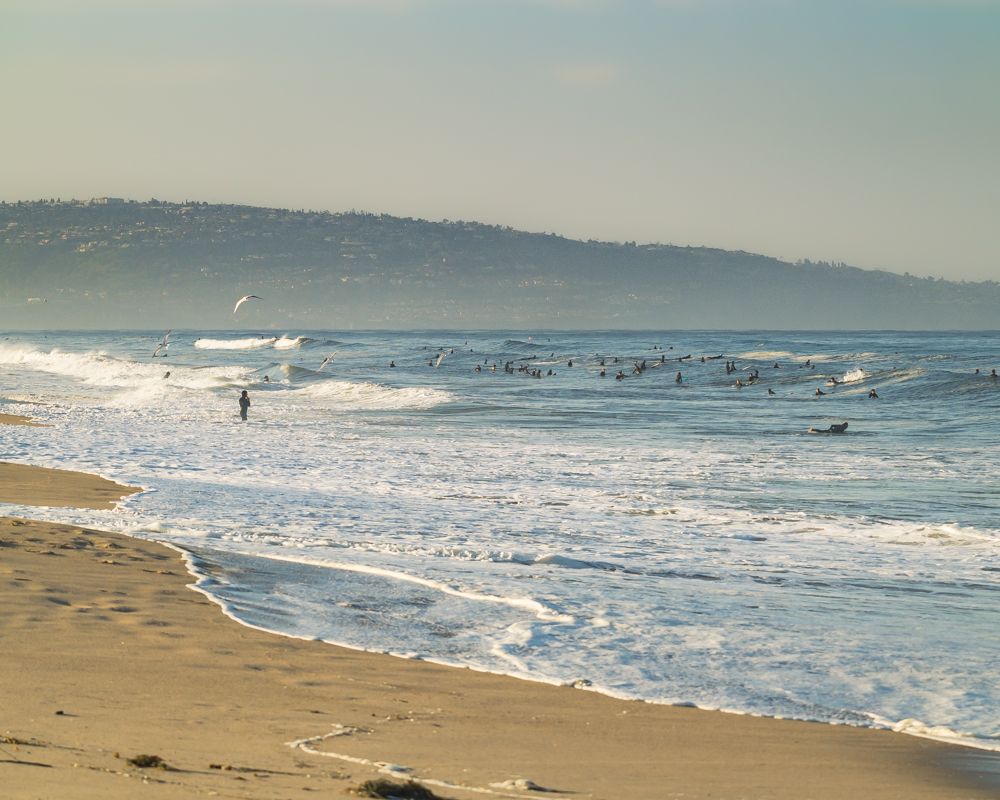
Sara Kohrogi preps for a 6 a.m. session at El Porto near Manhattan Beach, California. [Matthew Fults photos]
Sara pulls up in a white Land Rover Defender, tweaking her parking a time or two to snuggle in near our white Land Rover Discovery. This wasn’t planned. But it’s charming, like a Land Rover surf date.
She flashes a quick smile and doubles down with a quick wave before stepping out of the Defender and greeting us. She’s about 5-foot-2, with long, straight brown hair streaked at the end with highlights. Dressed in sweats and a hoodie, her compact but chiseled frame is hidden. Although it’s barely 6 a.m., Sara is in proper form: energetic and in her happy place. As she makes small talk, pulling her boards from the back of the Defender, applying wax, she keeps glancing at the water, looking for her spot.
In doing so, she reveals a clue to her inner dialogue, one she hopes to reconcile with an important date looming in Los Angeles five years into the future.
Sara and her mom, Susan, are very close. It would be easy to dismiss it as a mother-daughter thing. In fact, it runs much deeper than that.
Susan Ikuhara was the first in her family born in America. Her father, Akihiro “Ike” Ikuhara, was perhaps the most influential person in the merging of Asian baseball talent with North America.
“My father and my mother immigrated from Japan 55 years ago. My dad was a baseball fanatic. He coached the Asia team. He was the manager for Asia (University) in Japan. And he actually brought that team to number one. And they won the championship while under his term as a manager there,” Susan says. “He was never good enough to make it to the pros. But his passion was baseball. Everything was about baseball.”
Through pure determination, Ike found his way to Spokane, Washington, and worked side-by-side with Peter O’Malley, who was then the general manager for the Spokane Indians. This was 1965. Two years later, Ike was in Los Angeles, working in a variety of capacities. He would be a trusted confidant to O’Malley, who would eventually take over ownership of the Dodgers from his father, Walter Francis O’Malley.
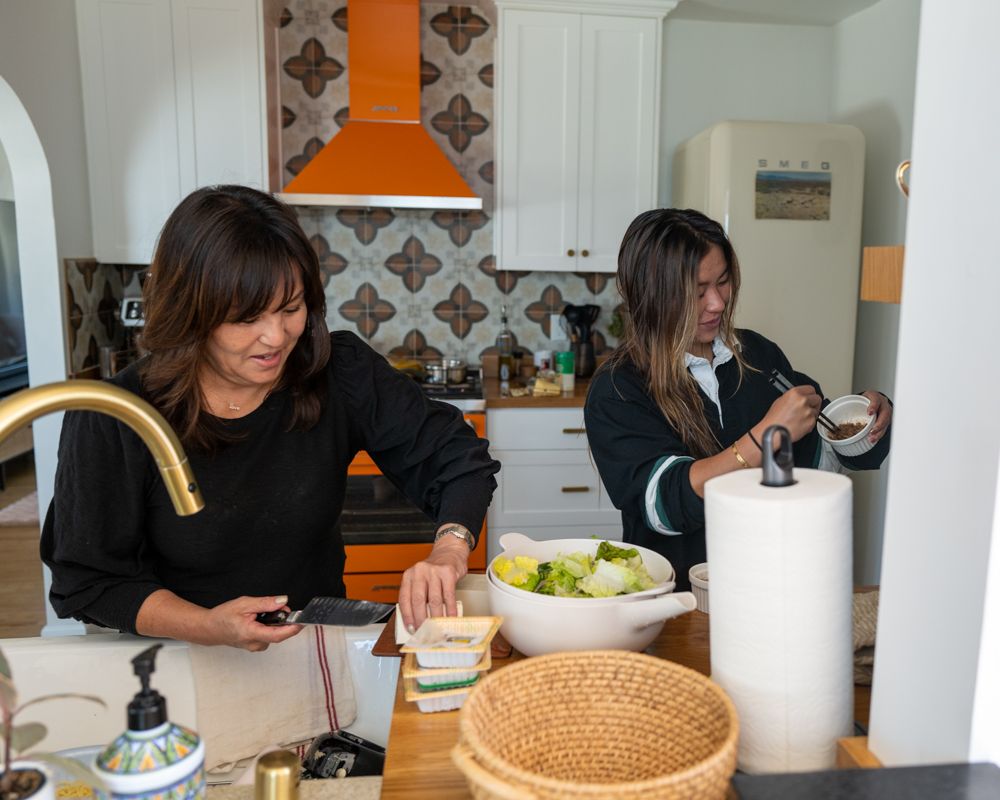
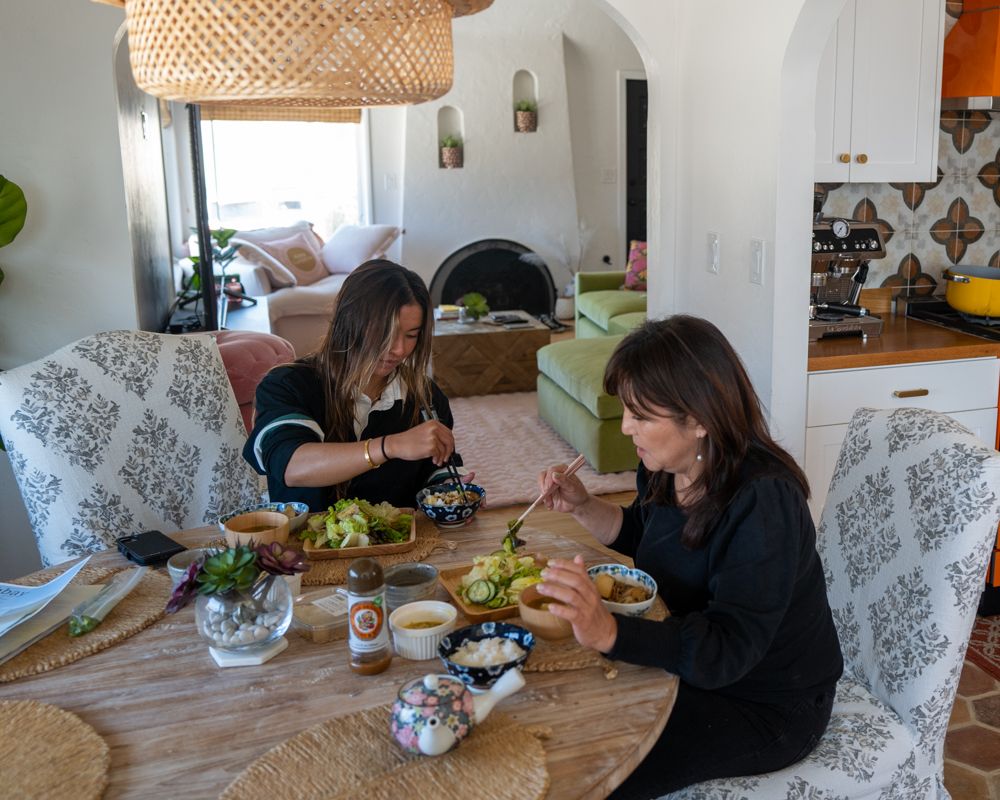
Sara Kohrogi with her mom, Susan, in Hermosa Beach, CA. [Matthew Fults photos]
Susan and her older brother, Mutsuo, grew up living a baseball life. Years later, Susan would marry Acey Kohrogi, who would later take on roles with the Dodgers and, currently, the San Diego Padres. They would have three children together, Sophie, 28, Sara, 26 and Kai, 18.
The Kohrogi kids also grew up living the baseball life.
“I grew up on the field at Dodger Stadium, and so did my mom,” Sara says from her studio apartment in Hermosa Beach.
Susan says the kids were fully integrated into the Dodgers’ lifestyle.
“Sara grew up in baseball, for sure. That’s basically what baseball was, her life. She’s grown up at the stadium. We’ve had birthday parties at Dodger Stadium. She loved baseball to the point that she wanted to become a baseball player.”
Ike Ikuhara passed away in 1992 at the age of 55. This would be two years before Sara was born. By all accounts, Susan has carried her father’s energy — if not his flame — forward.
“She is a good example of the type of person my grandfather was. And, you know, I grew up hearing stories about all he did, seen pictures, meeting his friends that he's made all around the world,” Sara says.
On the shelves around her, pictures of her grandparents are ever-present. In some, they are just a happy couple. In others, Ike is proudly wearing his Dodgers cap and those fashionable, wire-rimmed aviator-style eyeglasses from the ’70s. In one, he’s smiling broadly, his right hand extended. Almost like he’s smiling and reaching for Sara. This one rests on her nightstand.
“His energy is still guiding us somewhere.”
And here, another clue emerges. This one is the driver of her journey.
“Sara, when she was a kid, she was always like the stud. She was a stud athlete. She was kind of the light, the light bulb, the spark plug, if you will. She was super energetic all the time and she was always doing some sort of sport. So whether it was surfing or basketball or baseball or volleyball for a little bit — she was always super into sports and just a really physical person.”
Sunny Villapando and Sara Kohrogi were instant friends, and they didn’t even know it. They started hanging out as young children because their older sisters were friends and volleyball teammates. The families became close and would spend vacations together in Hawaii.
Sunny is almost like Sara’s mini-me, except she’s taller. A former collegiate standout in volleyball at both Stanford and USC, Sunny brings the same Southern California vibe as Sara. Rays of energy flow from each; their smiles radiate warmth; their energy is like a lava flow of colorful candy.
Without question, Sara connected with sports in a way her grandfather and father did. She embraced all things athletic, which was both her natural state, but also a way for her to fit in.
Growing up Japanese-American in Hermosa Beach, Sara was reluctant to embrace her family’s heritage. All she wanted was acceptance, but her own insecurities magnified a sensitive issue that is common for many minorities. In effect, those insecurities became her mental furniture, arranged in a way that delayed acceptance of her true self.
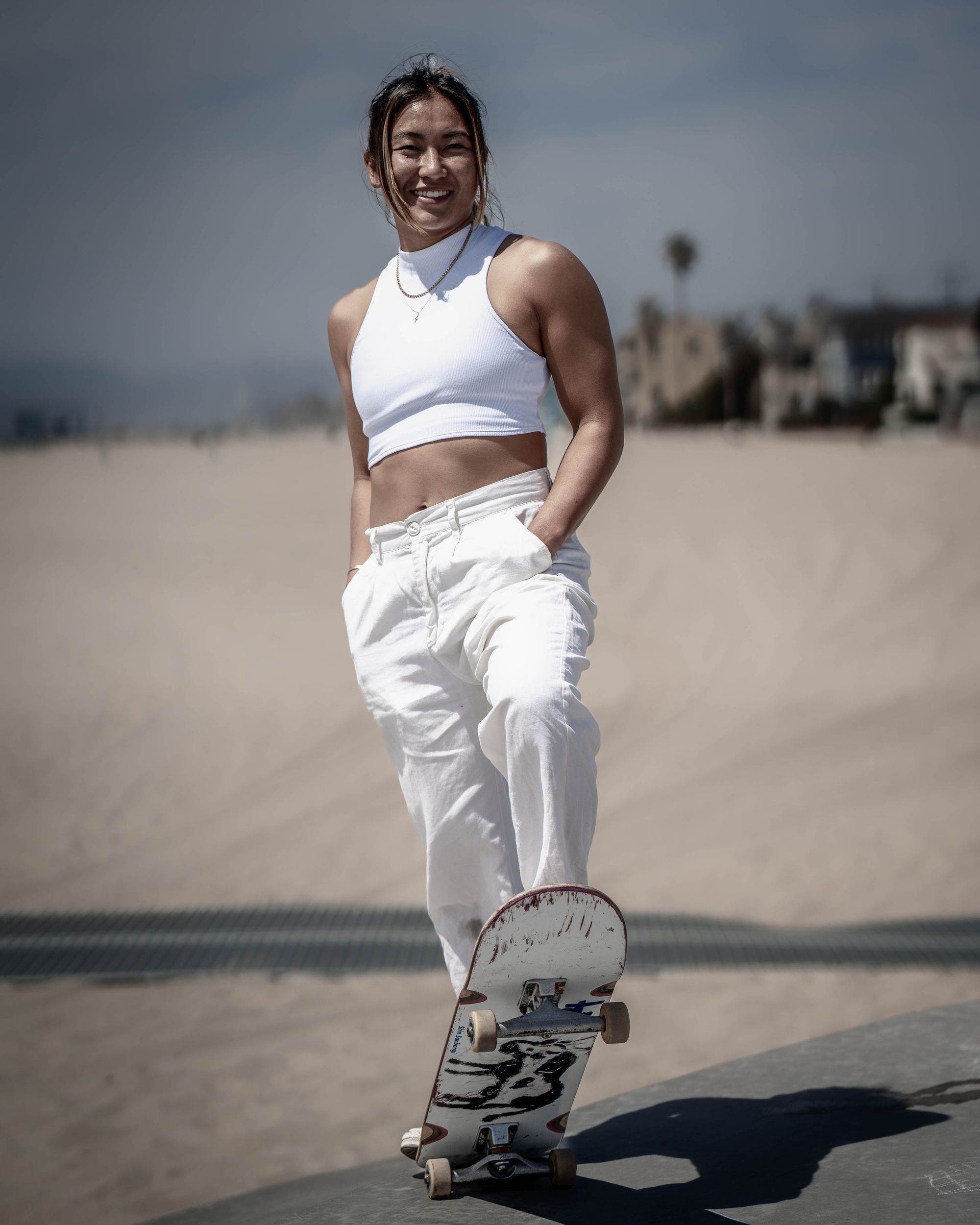
“There was one other Asian family in my grade, just one, and I don't even think they were Japanese. I think they were Chinese. I was tiny. I was different. And then the desire to fit in was really, really powerful,” Sara says.
“I would get made fun of for my physical appearance. And if I achieved well academically, it was because I was Asian. It wasn't because I was smart. And so those little things add up when you're young. And I just started to completely shut off the fact that I'm Japanese. And I would say, well, I'm American.”
Her mom can relate to this nuanced displacement. Being the first in her family actually born in America, Susan was self-conscious in the same way as Sara.
“I was very embarrassed to be Japanese,” Susan says. “Even though I grew up in Gardena, where there was a huge Japanese-American community, I did not lead on to the fact that I went to Japanese school or that I even spoke it. So that's definitely some parts that I understand about Sara.”
The continental divide between how Sara felt about herself and her ethnicity drifted into her teenage years. She did everything she could to appease her peers. With her father having Japanese and Hawaiian roots, she found some middle ground for a while. It was cooler to be from the islands than being Japanese.
“I was born here … this is something I kind of regret,” Sara says. “I would never want my children to feel this way looking back. But I just basically dismissed it completely, like hid it under the rug. People thought I was Hawaiian. I would roll with it because I look like it.
“It was weird. When you're young, you're so impressionable. You get kind of picked on for your differences. When we get older, we realize our differences is what makes us beautiful and unique and loved.”
Being the athletic spitfire of the Kohrogi family has been Sara’s role. She was playing baseball, basketball and volleyball as a young girl. She then picked up golf, and like everything, it came easy to her. As a middle schooler, she was competing in Junior PGA events.
“I basically thought that's what the route would be for her, because, again, she was passionate about everything and anything she picked up to just be a natural at it,” Susan says.
Sara added, “So growing up, I think there wasn't a single sport that I didn't play. And if I didn't play it, it was just because I didn't have the time to. So I played baseball, basketball, soccer, tennis. I was skateboarding. I was snowboarding at the time. I was playing beach volleyball. I loved to be active.
“I loved games. When I was 13, my dream was to become the first female (Major League Baseball) player and at 13, the boys shot up. I didn’t, and they're starting to throw in the 80s (mph), and I realized, okay, just physically, I'm just not going to be able to make it.
“And that's when I found golf.”
Sara may have found golf, but during a school physical, nurses found something else. She remembers bringing home a piece of paper and handing it to her mom.
“I was like, ‘What in the world is this? Is that from the nurse?’” Susan recalls. “And they said that she has a severe curvature in her spine and it's called scoliosis, and she needs to go to the doctor right away. And I was like — scoliosis? — I've never even heard of it. And so I started looking on the internet, freaking out.”
Her parents took her to “doctor after doctor” searching for answers, and most of them recommended the same course.
“They said she'd have to wear a brace and get surgery. And I thought, ‘Oh, my goodness, what kind of surgery?’” Susan says. “So you got to put metal rods in. That is not going to work for her because first of all, I can't see her wearing that brace because that just would crush her. I knew that her self-esteem, who she is, and then physically, she's so active, like, there was no way that having that kind of surgery and being bed-bound and not allowed to do whatever it is that that surgery requires you to recover from was not an option.”
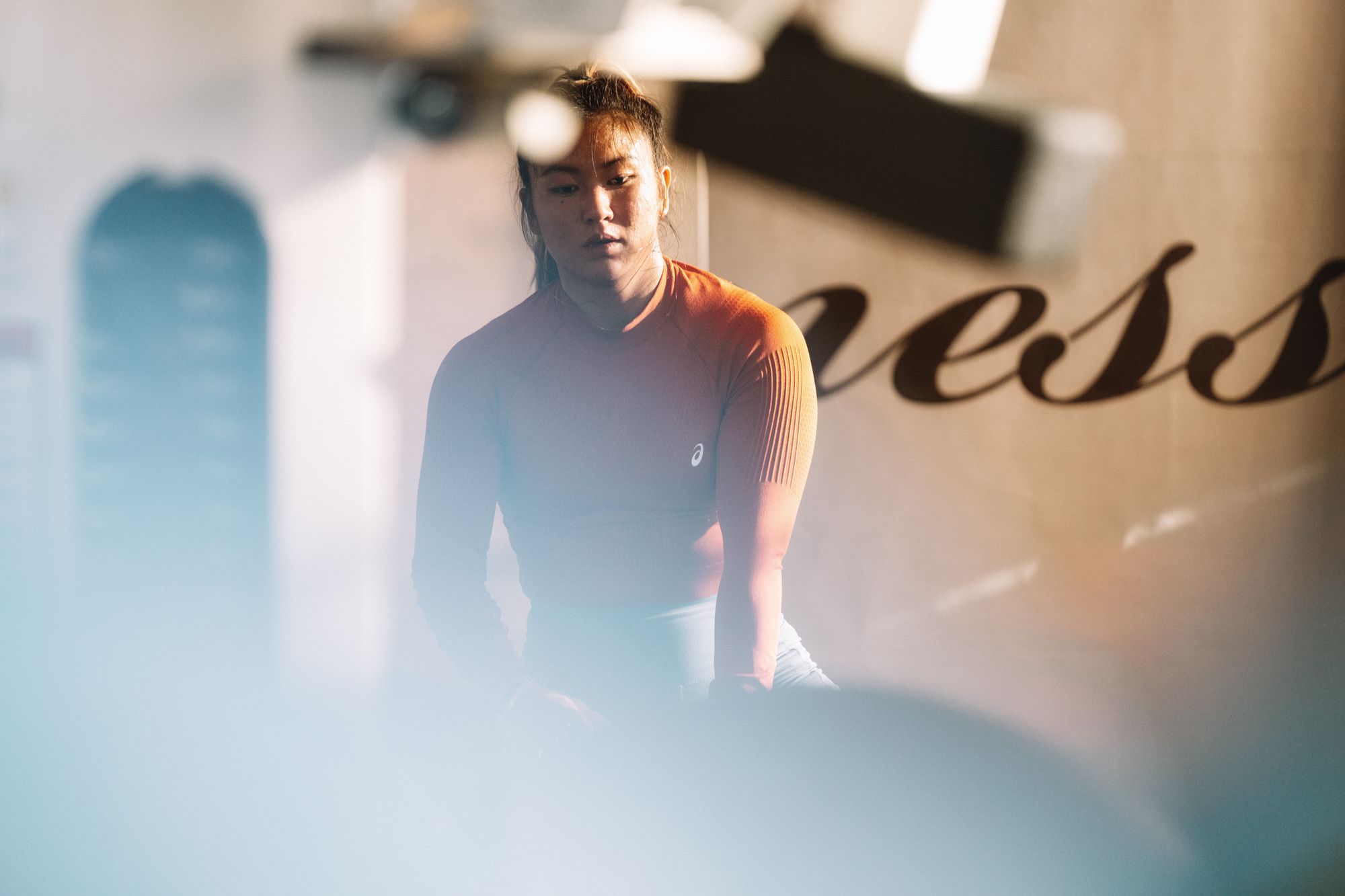
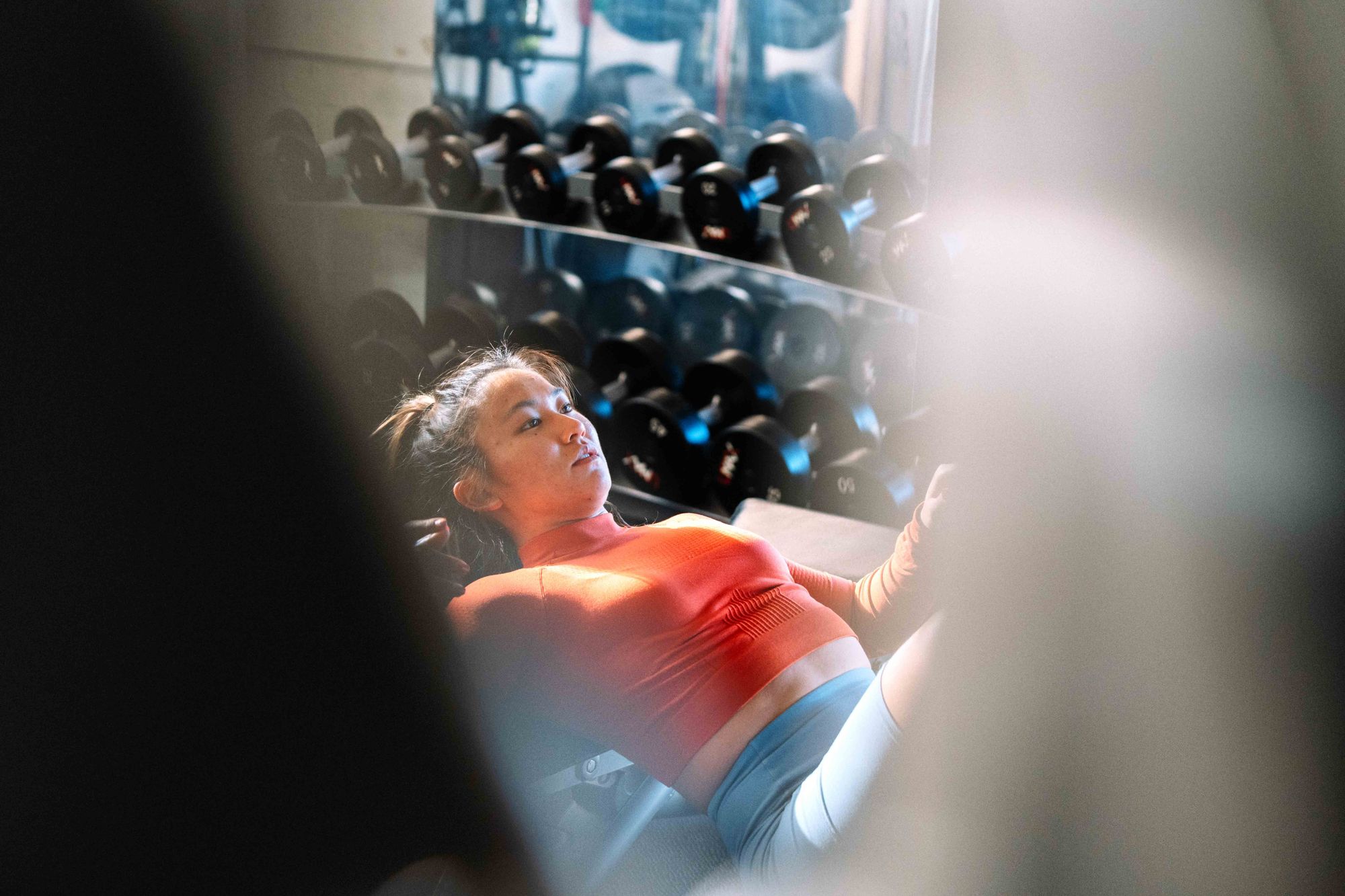
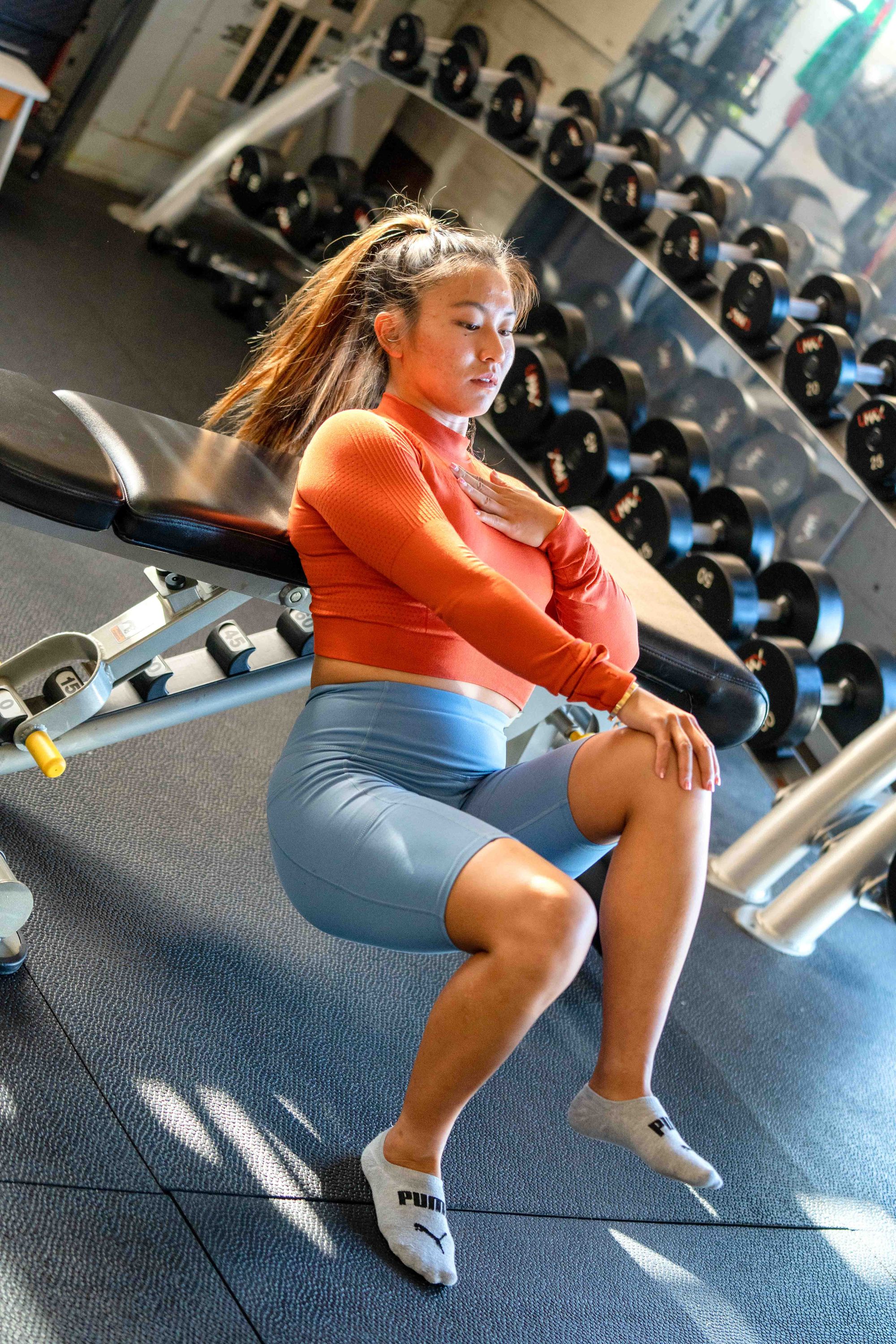
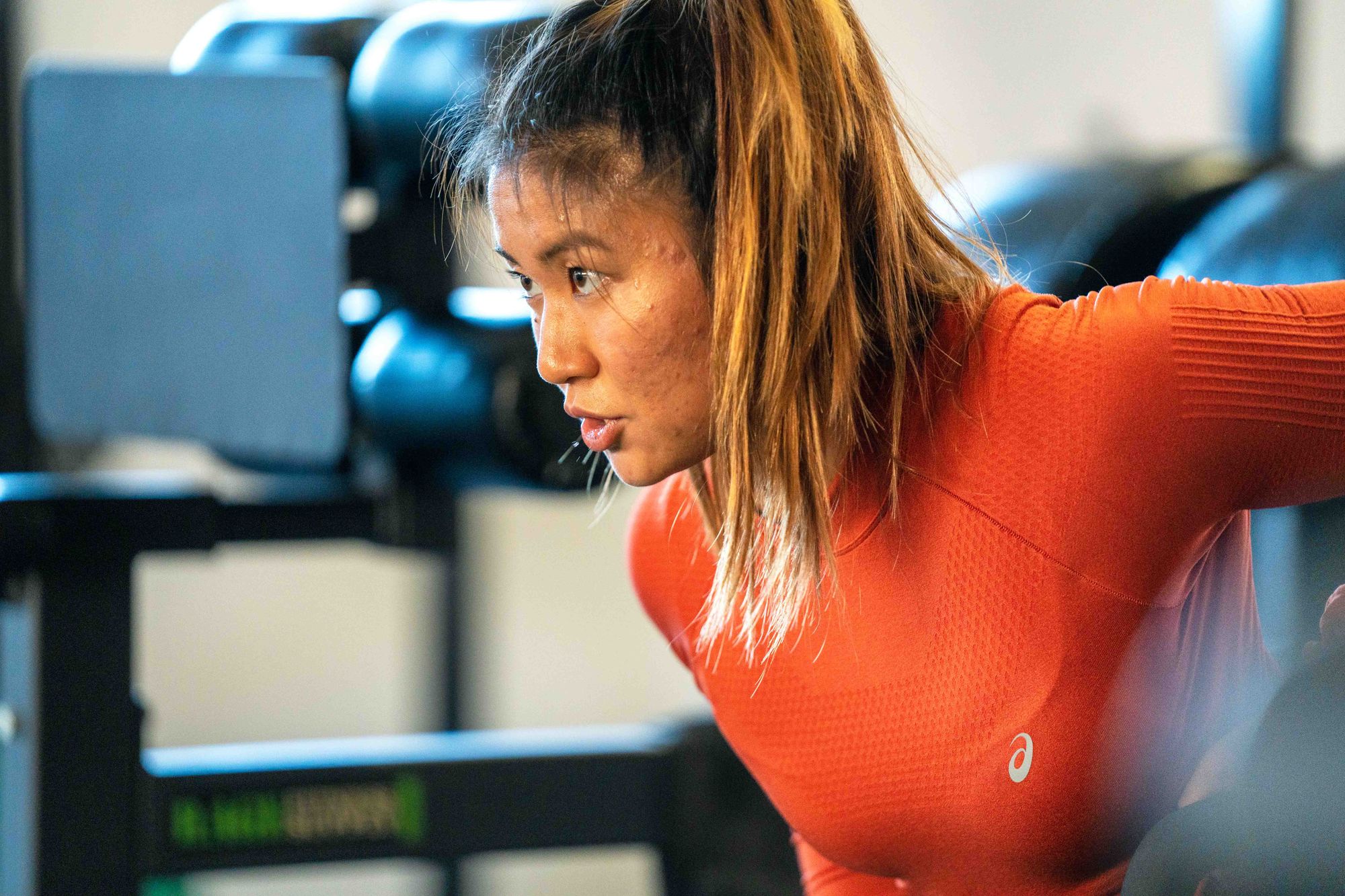
Sara's focus is on L.A. 2028. That means getting the work done now. [Matthew Fults photos]
Sara was 11 at this point and harboring dreams of being a professional athlete. The idea of anything that prohibited that pursuit wasn’t in the cards. With the family agreeing surgery seemed extreme, they sought a different approach to keeping Sara healthy.
Through his work with the Dodgers, Sara’s father connected with Ramyn Savar, a soft-tissue specialist based in Beverly Hills.
“He's a big factor in my physical success and not having pain with my condition,” Sara says, “His style is very unique and different. He seems to blend a lot of techniques together.
“When I was diagnosed, I was told I would be in pain. I would maybe not be able to give birth because I wouldn't be able to bear the weight of a child. I was told that I would suffer in many ways and it was really scary. And none of those things have come true. And if anything, I feel stronger and healthier in terms of pain than a normal person my age.”
As Sara responded well to the soft-tissue treatment, her mom was looking for ways to keep her active while still avoiding surgery. Susan enrolled her in swimming, hoping this would pacify her middle child’s competitive fix.
Unfortunately, Sara didn’t connect with this water sport. In fact, Susan says, she came home one day and declared, “Mom, I hate it!” Rather than sulk, young Sara had another idea.
“Can I surf?”
Sara has always been a doer. Whether that’s playing baseball with boys or setting her sights on the LPGA or finding a way to manage scoliosis without surgery. She’s a whirlwind of energy; if you don’t believe it just check her Instagram. Any day, she’s at the batting cages, at the driving range, catching waves, doing tricks on her backyard skate ramp.
She’s like a toddler on the back side of a cotton candy sugar rush.
When her scoliosis diagnosis leaned into her dreams, it was like an unsteady game of Jenga. There was a loose block, and if you pulled it too quickly, everything collapses. But if you removed it carefully, the foundation remains.
Sara chose to be cautious and maintained a strong athletic foundation through surfing. All the paddling involved helped her strengthen her back and shoulders, which, along with the soft-tissue treatments, has helped her stay active without surgery. Like most, the first few times were a reality check. Susan remembers her first day paddling out.
“God love her. She had the worst surfboard. She went out. She tried her best. She couldn't even paddle out because it was like a huge day (the waves). And I was just watching and I was like, ‘Oh, my goodness. Get out there, honey,’” Susan says, laughing at the memory.
Her dad, Acey, did some surfing. So the sport itself wasn’t foreign in the Kohrogi household. Sara caught the bug quickly. Determined as ever, she knew the best way to get better was to surf as much as she could. All she needed was opportunities to get out there.
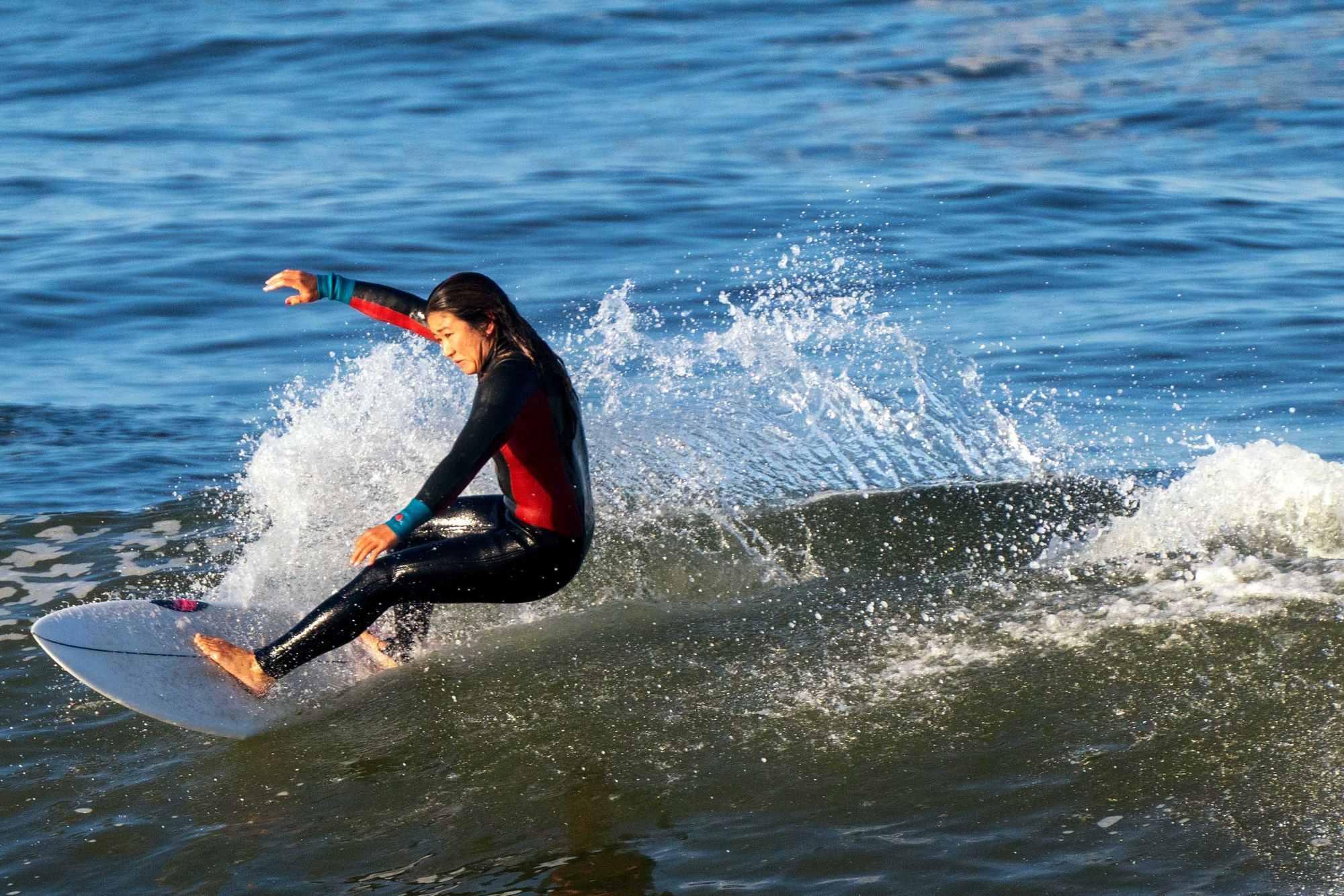
“She decided she was going to start the surf team at her middle school,” Susan says. “So she did it. And they started having a surf team that would meet up a couple of days a week. And then she got better and better.”
It turns out, this is what Sara does. She builds communities. If there’s something that doesn’t exist, she finds a way to create an environment that welcomes everyone. This trend didn’t stop in middle school.
Watching her a couple grades behind was her friend Sunny Villapando. Looking back, Sunny marvels at what Sara did to build a legacy surf team not once, but three times.
“When I think about Sara, she started the surf team in middle school. She started the surf team in high school. She started the surf team at Cal Berkeley. And none of these things were with the intention of putting herself on a pedestal. It was not selfish in any way,” Sunny says.
“It was because she wanted to share the sport of surfing with everybody and anyone she knew. And so with Sara, I think that building those communities for her, it comes natural because it's really from a place of passion and love. She has always been somebody who, in my opinion, kind of bridges communities.”
By the time Sara was a senior in high school, she wasn’t chasing waves, she was making them. She won the individual state championship as a junior and doubled down academically by being class Valedictorian.
At 16, she took her first surfing trip to Japan. She was instantly hooked.
“The waves are amazing. I said ‘This is beautiful.’ I felt grounded. I felt safe. I felt inspired. It became very cool to dive into your roots … they call it Reclaiming Your Roots. It became accepted, so that’s when I was like, ‘Why am I pretending that I’m something I’m not, pushing away something that is so much a part of me?’”
Each year, in addition to the family trip, Sara made a surfing pilgrimage to Japan.
She took it further during college, doing a three-month internship in Japan her junior year. As a senior, she took time to fly over for competitions, so she could start accumulating points that would put her in a better position to qualify for the national team.
Two days after graduating from Berkeley, Sara moved to Japan. She took a job with a sponsor and was working her way through the Japanese surf circuit. Part of this endeavor was her desire to fully integrate herself into Japanese culture. She wasn’t just interested in connecting the dots. She wanted to envelop herself. This was her going all in on her heritage.
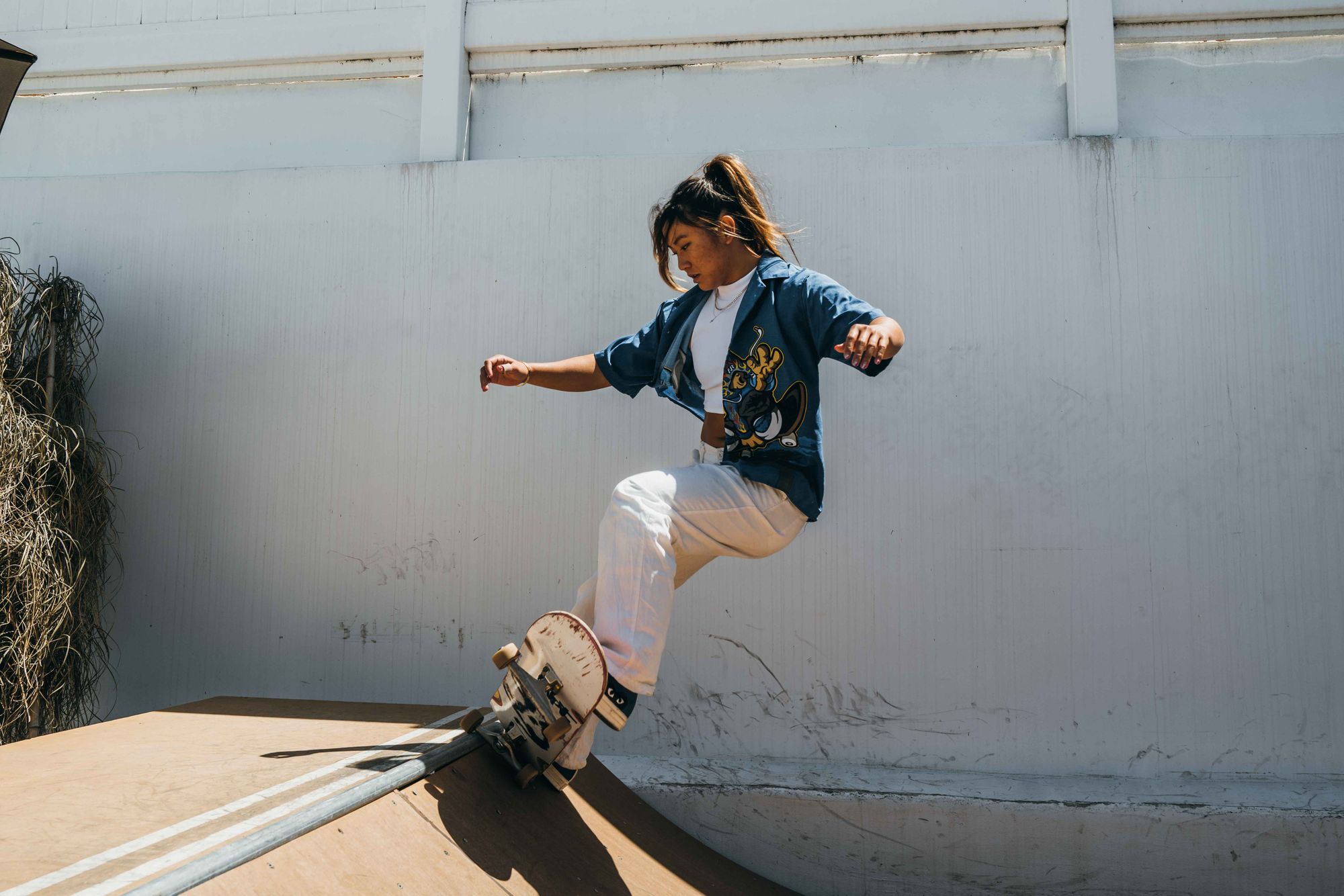
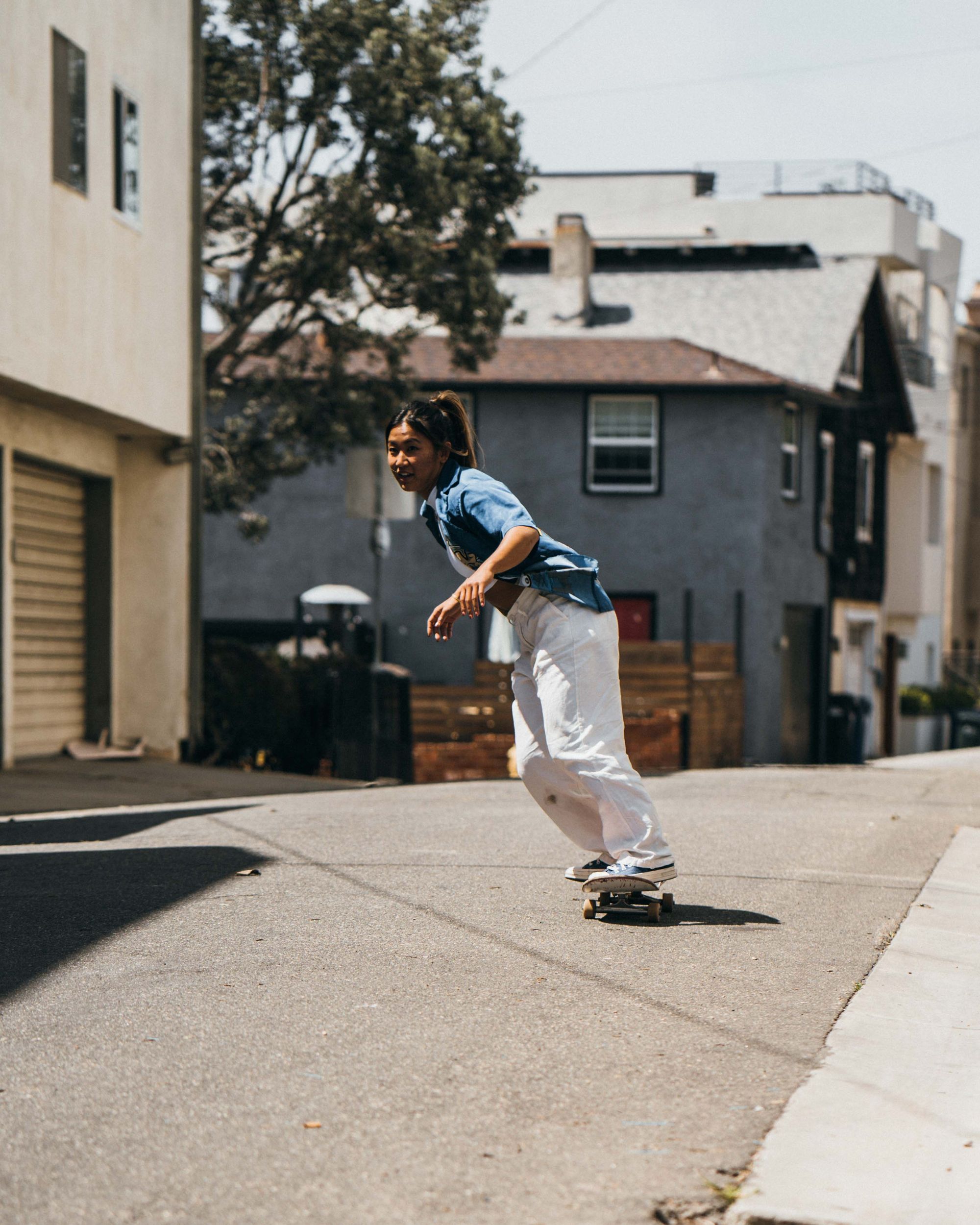
Whether it's her backyard ramp or the alleys of Hermosa Beach, you can catch Sara ripping somewhere. [Matthew Fults photos]
Initially, the surfing stuff was more like a bonus — a nice dessert after a four-course meal.
And then something unexpected happened.
“In 2019 I won the league, I only ended up getting to surf half the season, but I scored so high I won,” she says. “That year, if you won the league, you got put on the national team to go to the Japan Open, which was the final Olympic qualifier.
“The way I found out was I was texted a screenshot of an article in Japan from one of my friends and it said that my name was on it.
“And I just was like, ‘Why is that? Is this real?’ And it was explaining how I won the league that year. It felt like this is the same reaction I had when I got into Berkeley. I dropped my phone, I screamed and I looked at my mom and dad and was like, ‘I have a real shot at the Olympics.’”
Pandemonium ensued.
“Everyone was screaming. I was crying because we didn't have that expectation.”
Right around the time of the pandemic, Sara was juggling some pretty big projects. She was attempting to qualify for the Tokyo 2020 Olympics, which had been pushed to 2021.
Additionally, she signed on to be featured in the Disney+ series “Chasing Waves.” This eight-part docu-series followed a group of surfers trying to make the inaugural Japanese surfing Olympic team, while also highlighting the cultural ties and influences Japan has bestowed on the sport.
For Sara, this felt like a big circle was trying to close, bringing together generations of her family. Her grandfather, Ike, played a key role decades ago in baseball returning to the Olympics. He was enshrined in the Japanese Baseball Hall of Fame.
“At the time when I was shooting “Chasing Waves,” it was a pretty long process. It was like a couple of years, a year and a half. And so for a portion of it, I was qualifying for the 2021 Olympics and emotions were high and I really just felt my grandfather present at that time.”
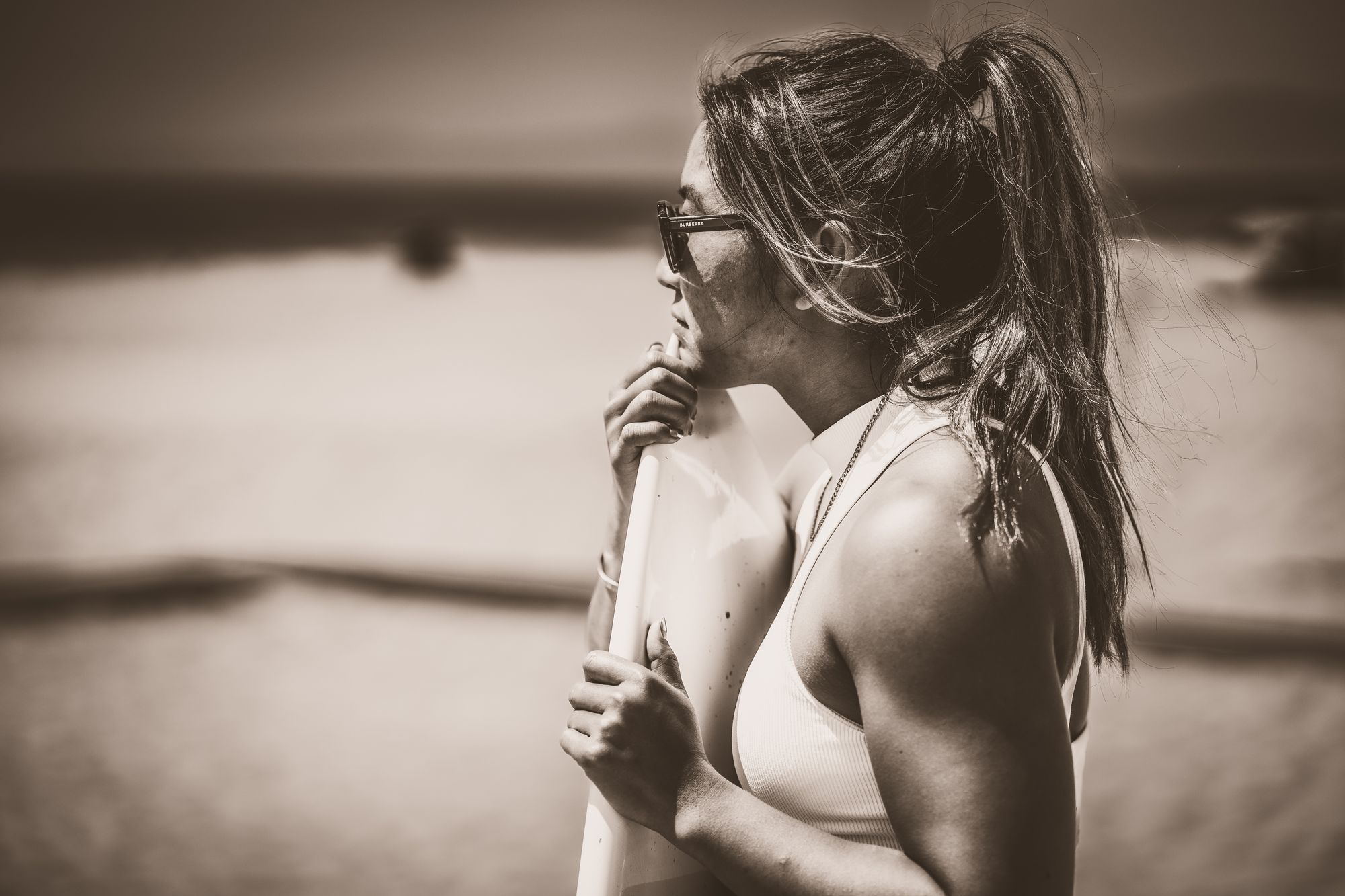
Her inner dialogue is filled with family lore. She's hoping to complete the story. [Matthew Fults photo]
Part of her qualification process involved being “certified” so she could compete in the Japanese pro leagues. This added another layer of stress and a further re-arranging of that mental furniture.
“It was just something where I felt like it was fate. What are the chances that I'm having a shot at the Olympics in Japan? And my grandfather (helped make baseball) an Olympic sport.”
Sara didn’t need another layer to this story, but fate delivered one nonetheless. Leading up to the Olympic qualifier, she suffered a knee injury that sidelined her for three months. As the pandemic continued wreaking havoc with schedules and creating further delays to the Olympic Games, her recovery timeline was compressed. After months of inactivity, she had just six weeks to find peak form. Peak form, at this level, is surfing at the level of an Olympian.
“It was really tough. But I was gifted with all the resources to make the most out of that situation. So I had to win the Japan Open to qualify for the actual Olympic team.” Three women would qualify, with two earning berths on the team and one being an alternate.
She pauses here, still feeling the sting of a reality where the stars didn’t align.
“Um … and unfortunately … I didn't make it.”
That full circle would remain open. Sara fell short of making the Olympic team. There’s also a feeling from Sara — unfair as it is — that she let people down.
But it’s also driving her to find purpose in a past she didn’t live, through connective tissues both real and not real.
Back at El Porto, blue hour is burning off as the sun crests the rooftops and swaying palms. Throngs of surfers are in the water, bobbing like buoys, rising and falling with the constant energy of swells pushing ashore.
Sara is now in a black wetsuit, with red accents. She’s standing alone at a railing on the edge of the parking lot, watching the waves. She’s asking herself — or someone — where the best spot is on a day that will be challenging due to the sheer number of surfers in the water.
This inner dialogue with herself is the actual re-arranging of her mental furniture. In observing her over our time together, this is something that stood out, so I inquired whether she trusts herself.
She inhales, then lets out a longer exhale, followed with a “Hmm.”
“That’s fair,” she admits. “I don't trust myself because I have this, like, heavy thought, like ‘This is a lot.’
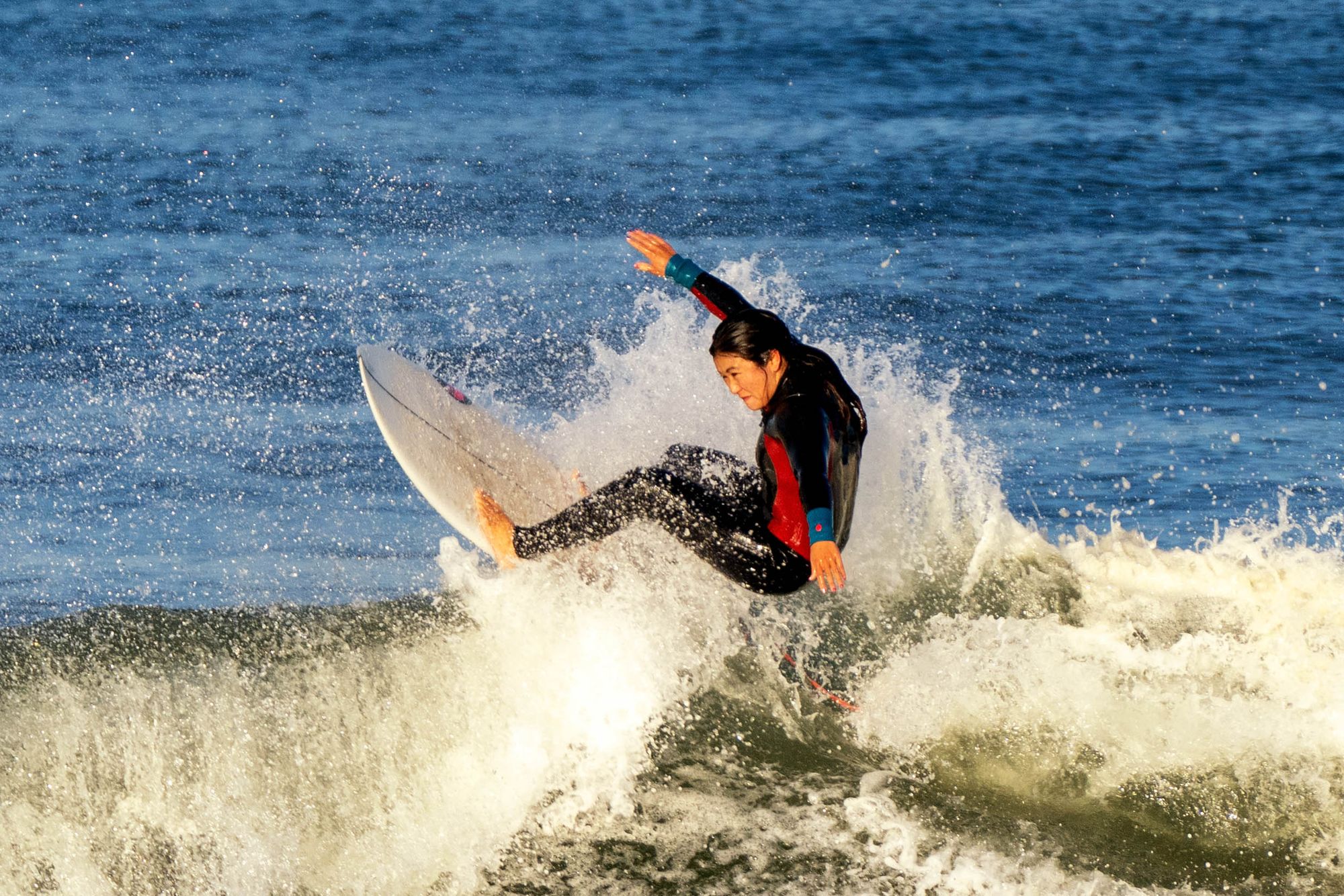
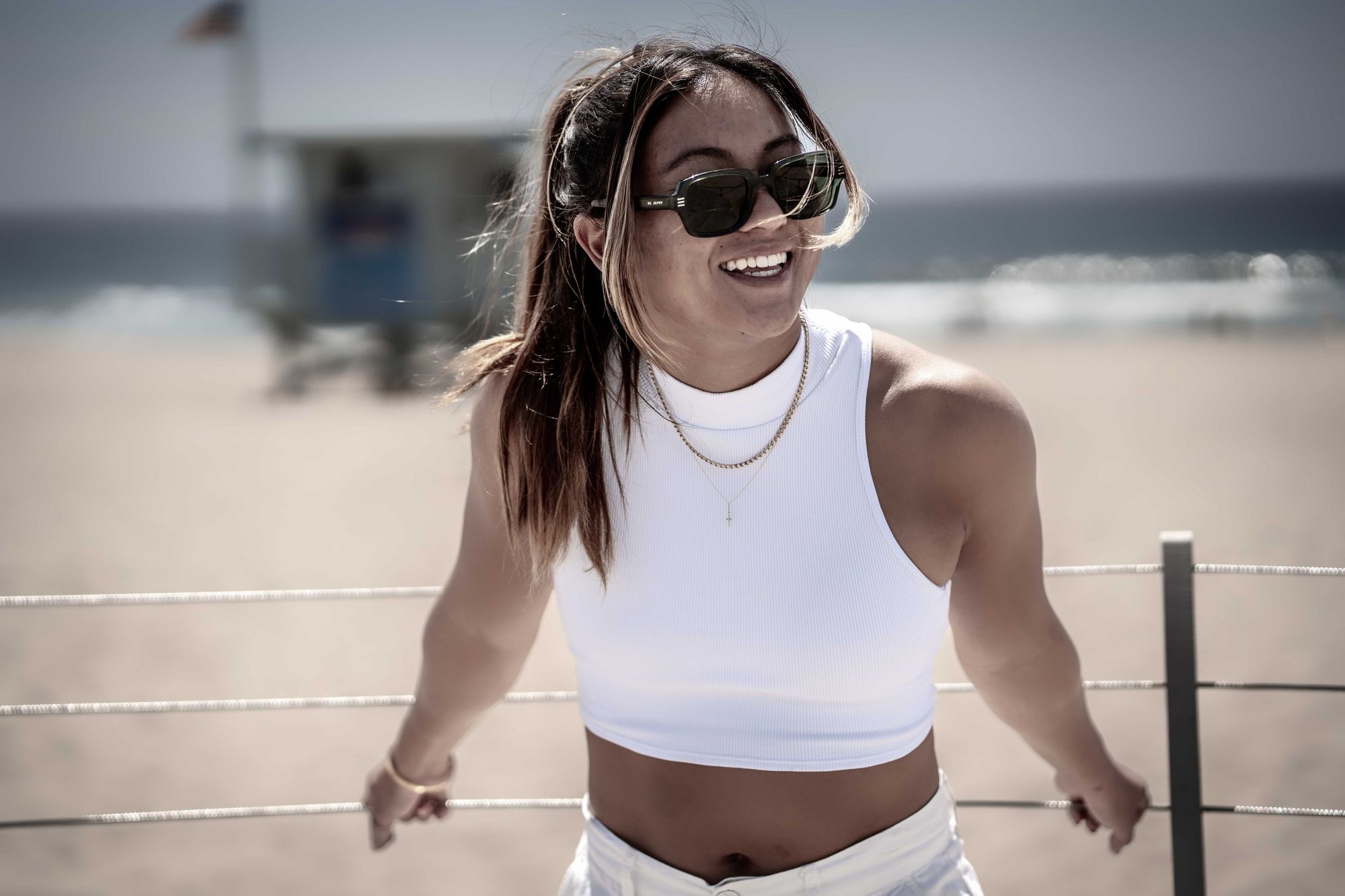
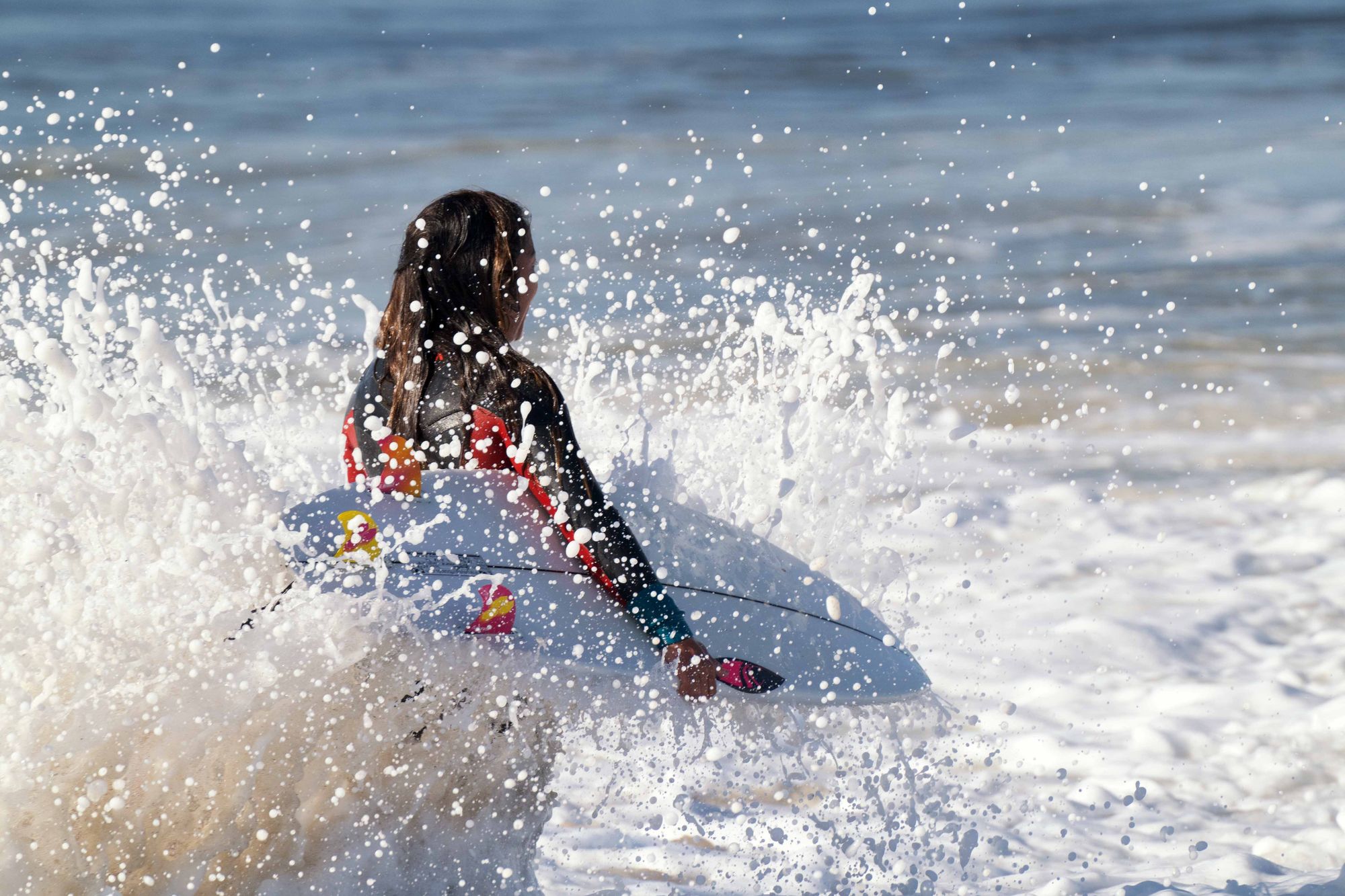
With a plan in place, Sara knows the path required to find her destiny. [Matthew Fults photos]
“So yes, I understand this is put on myself by myself, but I think it's the weight of carrying not just a family, not just the country, but a legacy on your back.”
For Sara, the legacy started by her grandfather is what’s at stake. She believes, because he died early at 55, his work went unfinished.
“I really want to continue what my grandpa did and I want to do it right. I think he failed to find a balance because he passed so early.
“For me, that's a lot of pressure because it transcends time … which is something that is so big that I feel like I don't want to mess it up.
“And that's normal. People don't want to mess things up that they care about, but something about it coming from a generation before I was even in existence, I feel like it's a lot of weight. I want it.
“And so this battle, this internal conflict, it's something that I'm hoping with a little bit more maturity, I'll be able to accept.”
Sara has already flashed the maturity card by announcing she would forgo a chance at the Paris 2024 Olympics. She is committed to training, getting stronger, being more mentally focused. She is, for the most part, avoiding competitions. The idea is to make herself whole while building toward a long-term goal, which is Los Angeles 2028.
This is where she can not just close the circle, but connect the ends. Her grandfather began his legacy work in Japan, and he completed it in Los Angeles. Perhaps the connective tissue she has been seeking all this time isn’t Japan. Maybe it’s L.A. Birthplace to her mom, birthplace to Sara, birthplace to her grandparents’ American dream.
This, too, comes with a set of pressure and layers that might require a new room for that mental furniture. But now she has a plan, whereas before things were falling into place by happenstance.
Indirectly, Sara has been searching for a connection to her grandfather. Through sport, she has found a way.
“I realize the more I go back to Japan and the more I've been meeting a lot of my grandparents’ and my grandfather's old friends, it gives me validation because the first thing they say is ‘You're just like him.’ And so that to me, for people who really spent time with him, really knew him, grew up with him, means a lot.”
Perhaps the goal for Sara isn’t trusting herself. Perhaps it’s earning the trust to continue a family legacy. She’s admittedly put this pressure on herself, but part of Japanese culture is rooted in honor. And that’s really what she’s doing here, honoring the legacy her grandfather created.
By doing so, she says, “I can step into this role of continuing something beyond time.”
Check out Sara Kohrogi's segment in our 2023 television show.